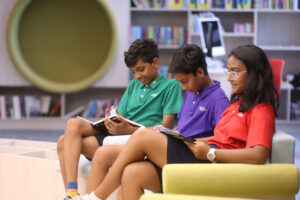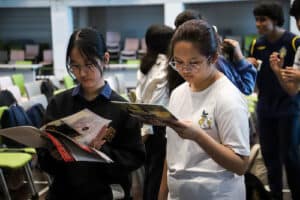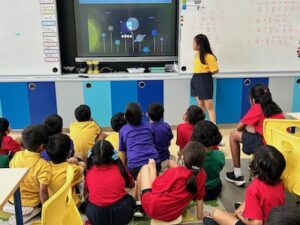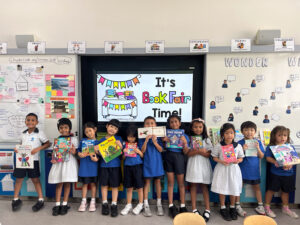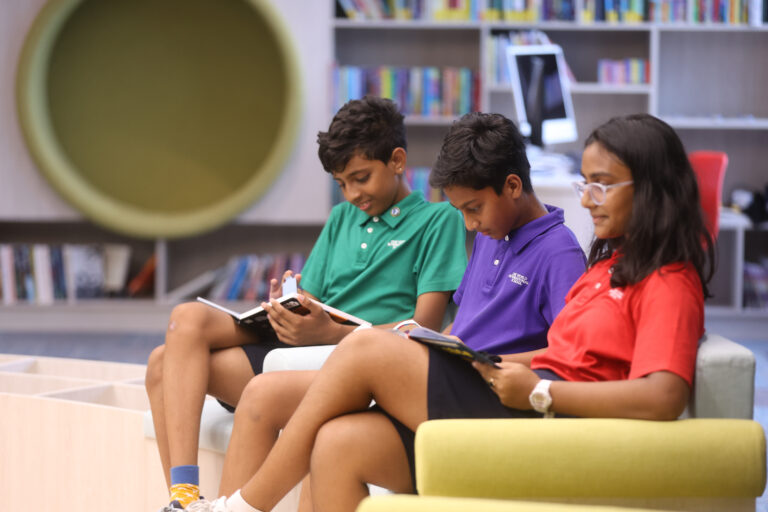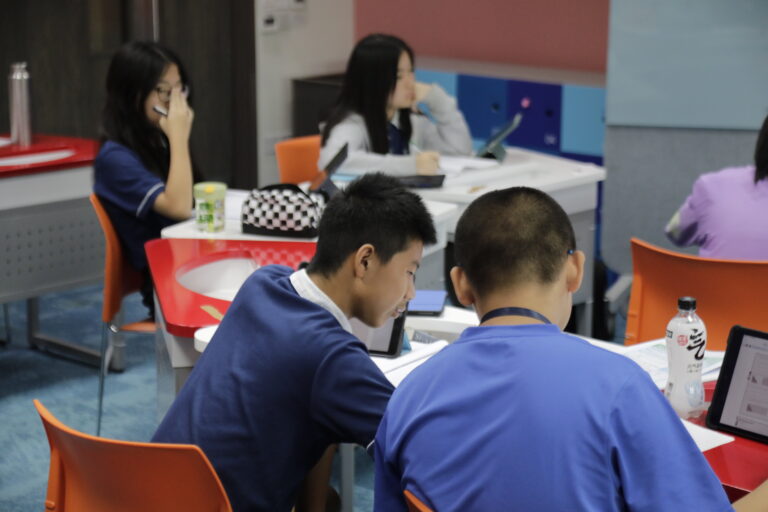Reading sets the foundation for your child’s academic success, with their literacy skills directly correlating to academic results throughout their education. But reading shouldn’t feel like a chore; it should be an experience your child loves and looks forward to.
At One World International School Nanyang Campus, we recognise the crucial role of reading, and we actively work to foster a love of reading in our students.
An Integrated Curriculum: The Heart of Learning at OWIS Nanyang
As a leading international primary school in Singapore, we are proud to offer the IB Primary Years Programme. This integrated curriculum provides the foundation for the learning experience at OWIS Nanyang, and it naturally fosters a love of reading among our students.
The IB PYP relies on Transdisciplinary Themes to help students make lasting connections with the material they are learning, and we actively incorporate reading activities throughout the various themes with our inquiry-based approach.
For example, OWIS Nanyang students in Grade 5 read the text Animal Farm, a political allegory about revolution and power during the How We Organise Ourselves unit on world governments. Not only do they read the text to better understand how governments are formed to manage a population and the dangers of totalitarian government, but they also work to identify Learner Profile traits within the main characters. The students also complete two writing tasks, called the “Hot Task” in our Talk 4 Writing curriculum, which is connected to their class readers. This is one example of how the reading and writing skills of literacy are thoughtfully and deliberately intertwined hand-in-hand in our primary curriculums.
Opportunities to explore books in multiple languages are provided during events such as OWIS International Day and Book Week. This reflects the multicultural nature of the IB PYP community, where the PYP’s principle of international-mindedness is being underpinned as well. Students are also presented with ongoing and constant opportunities to reflect on their reading experiences in the Talk 4 Writing curriculum, regularly enhancing their learning journey and personal growth.

Creating a Literacy-Rich Environment
In our classrooms and across our campus facilities, we take effective steps to create a literacy-rich environment for our students. The main school library, which the students visit weekly once with the classroom teachers, has a rich collection of home-readers and a variety of child-friendly genres. Students are also encouraged to borrow two books a week, and do a variety of reading activities on their selected books. We also have an ongoing library programme with the Library teachers, who carefully select and plan grade-suitable lessons for our young learners
In addition to the main library, each classroom at OWIS Nanyang has a library for the students to use daily. All classroom libraries are equipped with class readers that align with the skills and interests of the students in that classroom. Our teachers actively rotate books to pique the interest of students and make the library an inviting and enticing space. They also diversify their collections by adding magazines, graphic novels, UOI-related learning books and other reading resources to their libraries.
Classroom teachers also rely on digital tools and virtual reading resources, such as Epic and Oxford Owl, to support and promote healthy reading habits. Online libraries and virtual book collections allow teachers to make reading fun while simultaneously supporting the use of digital resources in alignment with the IB PYP objectives.
Read-Aloud Sessions
In the younger grades, teachers usually incorporate read-aloud sessions into their daily classroom routine. By reading story books out loud, teachers introduce students to a variety of characters, settings and genres. Teachers also use props like puppets to bring stories alive to our young readers. As they use their voice to give life to the characters, they showcase how enjoyable it is to not only read a book but also listen to a story.
Recognising the importance of community and family connection, many teachers also invite parents to come into the classroom as guest readers. Students love having special visitors, and these experiences make reading even more exciting for them.
Independent Reading
Across all grade levels, teachers make time for DEAR — Drop Everything and Read. Quiet, independent reading helps children strengthen their reading skills and develop strong reading habits that will carry over into their lives outside the classroom.
Annual Book Week Event
OWIS Nanyang holds our annual Book Week in Term 2. Book Week brings the joy of reading into the classroom. The students immerse themselves in stories and activities, with special author visits, buying books at the Book Fair and enjoy immersing themselves into the world of fiction by dressing up as their favourite book characters.
Assessment for Learning
Our teachers use formative assessment (termly benchmarking) to gauge students’ comprehension and monitor their progress in reading. In our communication with parents, we provide constructive feedback to support their literacy development.
Home-School Collaboration
Students get levelled readers weekly suitable to their reading levels. Teachers share reading recommendations, provide resources, and involve parents in literacy-related activities through the use of reading logs. Parents may approach their class teachers for support on their children’s reading.
How Parents Can Foster a Love of Reading at Home
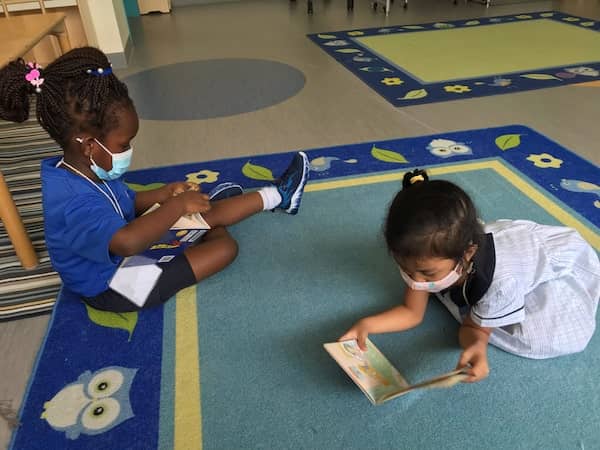
Reading may be fostered in the classroom, but children should be encouraged at home if they are to develop a love for it. Parents who are interested in supporting their children to develop healthy reading habits can help by:
- Letting children choose their books. Reading is much more enjoyable when children are exploring their interests and passions.
- Be a reading role model: Let your child see you reading books, magazines and newspapers both for the purpose of learning or for leisure.
- Creating a reading routine in your home. Carve out a designated time each day to read with your child or to have your child read to you. Children often find that reading before bed is a relaxing way to unwind after a long day.
- Visiting the local library. This special outing allows you to spend one-on-one, quality time with your child and gives them access to a vast array of options. During your visit, give them the freedom to choose their books to bring home. This fosters a sense of autonomy and personal interest in reading.
- Engage in regular read-aloud sessions. This could be done with the levelled books your child brings home. Take turns reading, and use the questions on the front cover to engage them in a discussion.
- Having conversations about books. Ask your child what they are reading in school or tell them about the book you are reading. You can talk about the characters in the books, their actions or the lessons learned from the text. Not only will this help your child to see reading as an opportunity to connect with you, but also it will improve your child’s reading comprehension skills.
- Creating a family reading challenge. Keep track of how many pages are read each day or how many minutes are spent reading and see who wins the competition.
- Supporting reading strategies at home. Talk with your child’s teacher about which strategies they are working on in class and reinforce these strategies in the home environment. Help your child develop effective reading strategies, such as decoding unfamiliar words, making predictions, and summarising content.
- Provide a variety of reading materials. You can offer a diverse range of reading materials, including fiction and non-fiction books, graphic novels, magazines, and newspapers. This helps cater to different interests and reading preferences.
- Mindful use of technology. Use reading apps, ebooks and audio books to provide some diversity with reading materials. However, ensure screen time is balanced and monitored.
- Acknowledge and celebrate your child’s reading accomplishments. Be patient and supportive of your child’s reading journey and celebrate with them when they achieve a new colour band in the school, finish a book, and share a unique or well thought out perspective.
- Connect Reading to Real Life. You can relate reading to everyday experiences. For example, involve your child in reading recipes while cooking, reading street signs while driving, or creating shopping lists.
- Giving your child a journal and asking them to write in it every day. Writing frequently will improve your child’s vocabulary, comprehension and more.
Discover the Difference at One World International School Nanyang Campus
At our international primary school in Singapore, we are proud to create lifelong learners who are constantly curious about the world around them. By showcasing that reading can be a fun, enjoyable and educational experience, we are able to set our students up for success throughout their lives.
Schedule a campus tour today and learn more about how the IB Primary Years Programme benefits our students.

